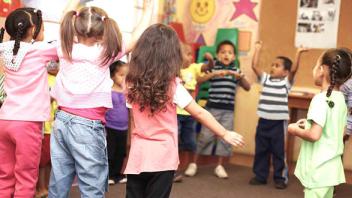Orton–Gillingham was the first teaching approach specifically designed to help struggling readers by explicitly teaching the connections between letters and sounds. Today — decades later — many reading programs include Orton–Gillingham ideas.
The highly structured approach introduced the idea of breaking reading and spelling down into smaller skills involving letters and sounds, and then building on these skills over time. It also pioneered the “multisensory” approach to teaching reading, which is considered highly effective for teaching students with dyslexia. This means that instructors use sight, hearing, touch and movement to help students connect language with letters and words.
What Orton–Gillingham focuses on
Orton–Gillingham focuses on teaching kids to read at the word level. While it can help develop reading comprehension, that is not the primary goal.
This approach uses multiple pathways to help kids learn. For example, students might learn the letter by seeing it, saying its name and sounding it out while writing it with their fingers in shaving cream.
Orton–Gillingham also puts a strong emphasis on understanding the “how” and “why” behind reading. Students may explore why the letter s sounds one way in the word plays, and another way in the word snake. Once they know consistent rules and patterns, they’re better able to decode words on their own.
Where to find Orton–Gillingham
Orton–Gillingham is a well-regarded approach to teaching kids with reading issues. That’s why many classroom teachers use Orton–Gillingham–type strategies in their reading instruction. Having students walk around the floor in the pattern of a letter, for instance, is an activity inspired by Orton–Gillingham.
But reading specialists use the approach and programs influenced by it more comprehensively with students who have dyslexia and other reading issues. Some schools provide Orton–Gillingham–like instruction through a student’s IEP or response to intervention.
There are a number of reading programs influenced by the Orton–Gillingham approach. These include the Barton Reading Program and the Wilson Reading System. These programs vary somewhat. But they all use a highly structured, multisensory approach.
How Orton–Gillingham works
The first step is assessing a student to determine his reading skills and areas of strength and weakness. This can be done by any specialist or teacher trained in the Orton–Gillingham approach.
Students are then taught in small groups with others at similar skill levels. Instructors follow a highly structured approach that teaches skills in a particular order. This order is based on an understanding of how children naturally develop language.
For example, the group may first work on making the connection between sounds and the letters that represent those sounds. The next step will be recognizing those sounds in words. Students must master each skill before they move on to the next. If a student is confused, the instructor will reteach that skill from the beginning. The goal is for students to use the skills they’ve learned to decode words independently.
It’s important to know what program your child’s school uses, and how different programs work. That knowledge can help you see if the school is meeting program goals. And it will give you a better idea of how to help your child at home.
Key takeaways
- Orton–Gillingham is a well-regarded approach to teaching kids with reading issues.
- Orton–Gillingham’s step-by-step approach is based on how children learn language.
- Students must master one reading skill before moving on to the next.
This article originally appeared on Understood.org , a free online resource for parents of children with learning and attention issues. Reprinted courtesy of Understood.org © 2018 Understood, LLC. All rights reserved.

